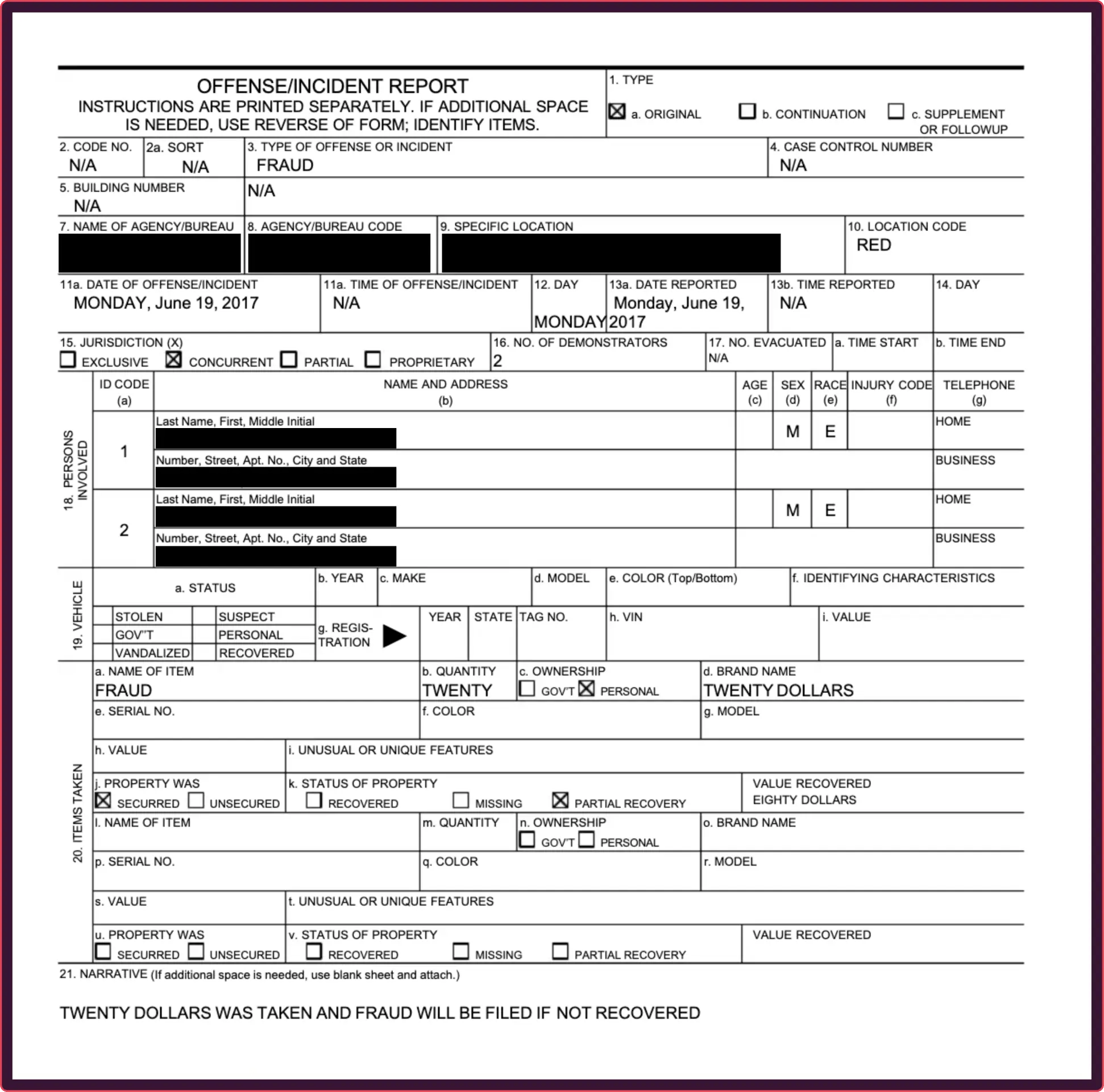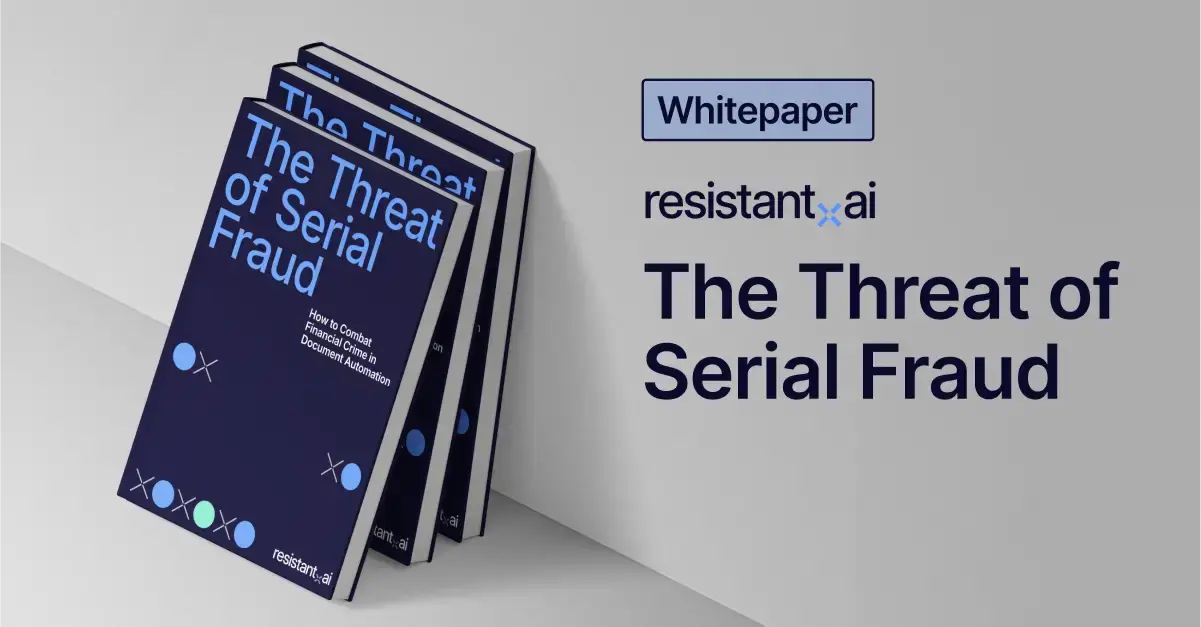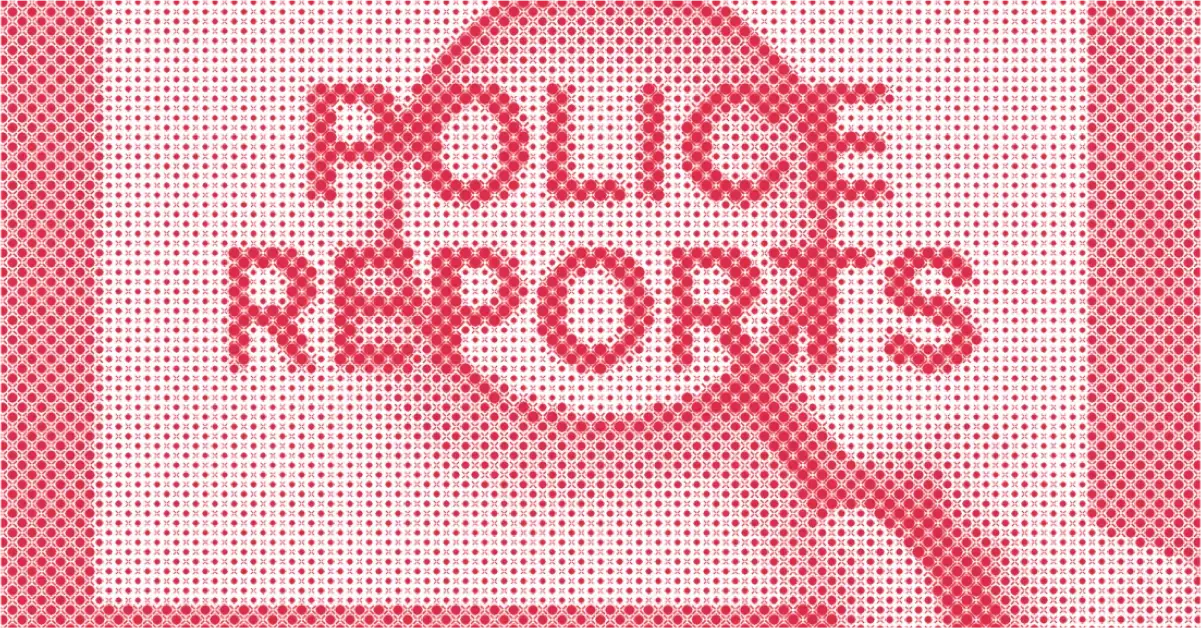In 2025, law enforcement agencies worldwide have warned about the rise of fake police reports. On July 16th of this year, several Louisiana law enforcement leaders were charged with selling such reports to immigrants seeking visas.
The problem isn’t just immigration fraud. For insurers, compliance teams, and investigators, missing a fake can mean payouts for crimes that never occurred, reputational damage, or even liability in court.
And fake documents aren’t just sloppy edits anymore. Generative AI tools and editable templates now make it easy to forge realistic-looking reports.
With fake document generation on the rise, it’s time for institutions to learn how to spot a fake police report from the real thing.
Read on to learn what police reports are, why they matter, and how fake police reports can be detected and stopped.
Check out our “how to spot fake documents” blog to learn about more common document forgeries.
What is a police report?
A police report is an official document created by a law enforcement officer to record details of an incident, crime, or accident.
These reports help law enforcement capture the details of an incident and provide an official record for future reference. According to police sources, police reports are used for four main reasons:
- Public records requests. Obtained lawfully through open records laws or as part of criminal discovery.
- Civil litigation subpoenas. Requested by law firms to support evidence in civil court cases.
- Active investigations. Accessed by investigators to advance an ongoing case.
- Internal reviews. Used by internal affairs divisions to examine officer conduct or department practices.
They are also widely used in administrative contexts (especially in insurance claims and investigations).
The structure and level of detail in police reports can vary. Some generic templates will provide mostly the same information, while official department-specific versions may include department logos, case numbering systems, and supplemental attachments that differ by jurisdiction.
Key elements of a police report that can be found across these varieties include:
- Report or case number. A unique case or file number assigned by the agency.
- Date and time of report. When the report was created and when the incident occurred.
- Reporting officer details. Name, badge number, and department.
- “Prepared by:” The name of who wrote the report (usually the reporting officer).
- Involved parties. Names, addresses, and identifying information of victims, suspects, and witnesses.
- Incident description. A narrative of what happened, including location, sequence of events, and any observed evidence.
- Charges or violations. Applicable laws or statutes cited.
- Signatures. The officer’s signature and, in some cases, acknowledgment by a supervisor.
- Additional information. Attachments such as photographs, diagrams, or supplemental witness statements.
These documents serve as proof that an incident occurred and was formally recorded by law enforcement.
Fake police report example for illustrative purposes only
Why are police reports important?
Police reports play a vital role in critical verification processes. A certified copy is often required as proof of incident for insurance claims, immigration applications, or legal proceedings. They are an essential (and trusted) part of risk assessment and compliance workflows.
Here’s how they’re used for document verification in specific contexts:
- Insurance. Validates claims for theft, accidents, or property damage before payouts are approved.
- Immigration. Used to support asylum claims or prove lack of criminal history in visa applications.
- Employment screening. Serves as part of background checks for sensitive or security-focused roles.
- Legal proceedings. Provides evidence in civil lawsuits, custody cases, or criminal trials.
Because police reports carry the weight of official law enforcement documentation, they’re widely trusted as verifiable sources of truth.
If you’d like to know how fraudsters are creating all these fake police reports, check out our “Types of fraud” blog to learn more about their tactics.
Threat intel: Template data about fake police reports
Our Threat Intelligence Unit collects data about template farms which make and distribute fake document templates for fraudulent purposes.
During our research we haven't yet cataloged many police report documents, however, they are still very prevalent online. A simple search on Scribd.com (a well known template hub) reveals over 850,000+ results for this document, revealing a high demand for online templates.
The subject matter, however, was broad, ranging from generic police reports, to blood splatter, loss of an official firearm, and much more.

Search results for "police report" on Scribd.
Threat level: Legitimate police reports are generated directly§ from secure records management systems or state-issued templates. Never from downloaded public forms. Any ‘police report template’ sourced online is likely an imitation used to create fake or self-written reports.
While that doesn't rule out edge cases like practical jokes or film/novel research, the odds are a majority of people downloading these documents have ill intentions.
This level of availability (and the nature of the templates) means institutions should be weary of any suspicious police report submissions.
5 signs of a forged or fake police report
Missing a fake police report can cause wrongful payouts, damaged reputations, and legal exposure.
Manual reviewers often skim these documents while sophisticated forgeries rely on tiny, believable errors to slip through. The best verification is AI-powered document fraud detection.
However, if you’re still reviewing documents manually in 2025, here’s what to watch for when someone hands you a report that looks “official.”
1. Inconsistent formatting
Authentic police reports are produced on agency templates and follow strict layout rules. Formatting errors are often the easiest initial giveaways.
- Mixed headers and seals. Police agencies use consistent letterheads and seals; variations or multiple seal styles on one document suggest copy-paste assembly.
- Officer ID formatting errors. Badge numbers or officer IDs that use the wrong length, prefix, or placement compared to official department conventions.
- Variable officer name formatting. Real reports use the same name-order and honorific conventions; inconsistent capitalization or swapped first/last placements are suspicious.
- Nonstandard pagination. Agency multipage reports follow strict page numbering; sudden jumps, repeated pages, or missing page markers indicate tampering.
- Odd file types or low-res scans. Official reports are usually PDF exports from records systems; high-compression JPEGs or strangely cropped scans imply manipulation.
2. Incorrect or misleading information
Forgeries often trade plausibility for speed, introducing factual mismatches that fail simple cross-checks.
- Nonexistent precinct or unit. Listed precinct names, unit numbers, or divisions that don’t match the issuing jurisdiction are a red flag.
- Wrong jurisdictional language. Use of national-level terms on a local report (or vice versa) indicates the author didn’t match regional terminology.
- Implausible location details. Addresses that don’t exist, incorrect street names, or coordinates that point to parks or empty lots rather than the claimed scene.
- Mismatched party identifiers. Victim, suspect, or witness IDs that conflict with provided phone numbers, addresses, or ID formats.
- Fabricated report numbers. Numbers that don’t match local numbering schemes (for example, missing area codes or prefix patterns used by the agency).
3. Illogical timelines and data anomalies
Police reports are a chain-of-events document. Inconsistencies in time, sequence, or evidence handling often expose fabrications.
- Incident vs. report creation. The report is recorded before the listed incident time (e.g., report created at 2:00 p.m. for an accident logged as occurring at 3:15 p.m.).
- Impossible response windows. Response times that defy geography (e.g., officer recorded on-scene five minutes after a call from 40 miles away).
- Evidence timestamp mismatch. Photos, video files, or CCTV stills attached with metadata that predates or postdates the incident logically.
- Missing supplemental references. Reports that describe witness statements, evidence photos, or diagrams in the narrative but fail to include them as attachments or referenced exhibits.
- Contradictory witness statements. Multiple witness accounts that repeat wording verbatim or contradict the core incident details without reconciliation (For example, one witness says the crash happened at an intersection downtown while another describes it on a highway, yet the report lists both without noting the discrepancy).
4. Police-report specific inconsistencies
These are red flags particular to law enforcement records and their internal workflows.
- Improper legal citations. Wrong statute numbers, incorrect charge names, or misuse of offense categories that don’t exist in that jurisdiction.
- Signature anomalies. Officer or supervisor signatures that look pasted, use mismatched fonts, or omit the accompanying typed fields (like badge number or officer ID) that normally appear in official templates.
- Incorrect disposition language. Use of civil-case terminology where criminal disposition wording is standard, or vice versa.
- Absent internal reference links. Real reports often reference related case files, CAD calls, or supplemental reports; fakes skip these cross-references.
- Odd victim/suspect classification. Labeling an injured person as “suspect” or using nonstandard role names (e.g., “claimant” instead of “victim”) indicates non-police authorship.
5. Metadata discrepancies
The file’s technical trail often tells a different story than the visible text.
- Suspicious creation dates. Metadata shows the report was generated or heavily edited after the listed filing date — for example, a report marked “submitted June 5” but with a PDF creation date of June 12, suggesting it was backdated or reconstructed.
- Authoring software mismatch. Creator fields indicating Word processors, image editors, or layout tools instead of police records management systems.
- Missing original email headers. Forwarded confirmations that lack full Simple Mail Transfer Protocol (SMTP) headers or sender domains consistent with agency email systems.
- Flattened PDFs with no revision history. PDFs that have been rasterized or flattened to remove edit history are commonly used to hide tampering.
- Locale/region metadata mismatch. Files exhibiting region settings, date formats, or language tags that don’t match the issuing agency’s locale.
Disclaimer: These red flags catch many common forgeries, but fraudsters adapt quickly. Manual checks can detect crude fakes and single-file spot checks, but they slow down teams and miss subtle, scaled attacks.
How to verify a police report
Police reports are typically verified by industries that rely on incident records to make high-stakes decisions. Insurance providers, immigration authorities, employment screening firms, and legal teams can verify them manually or through automation, but the difference in reliability is significant.
Manual checks are increasingly ineffective. Fraudsters now use editable templates and AI-driven tools to mimic official formats, seals, and numbering schemes, creating forgeries convincing enough to slip through casual review. Human reviewers also struggle with high volume, serial attacks that target weaknesses in their document intake processes.
AI-powered automation is far more effective. It scales instantly, assessing a document for fraud in thousands of different ways (in seconds) and flags contradictions that a person might miss. It also provides audit-ready verification trails that regulators and compliance teams can rely on.
That said, manual review hasn’t disappeared. Legacy workflows, compliance requirements, and low-volume cases still depend on it. If you must verify police reports manually, here are some techniques that can help.
Manual verification of police reports
While the red flags above provide useful cues, these targeted methods give you more concrete ways to confirm authenticity:
- Contacting issuers or databases. Confirm the report number and case details directly with the police department using contact info from its official website (not the document).
-
To find the relevant police department, you can use a source like the National Public Safety Information Bureau (but it’s a paid
subscription) or Police1.com (but their data is somewhat limited).
-
The best option is to search online for the named police department and contact them directly.
- Cross-checking narrative details. Compare the report’s description of the incident with supporting documents (e.g., photos, medical records, or claim statements) to ensure consistency.
- Check public accident or crime report portals. Many jurisdictions allow limited online access to traffic accident or incident reports. For example, state highway patrol sites or city PD portals often let you confirm whether a report number exists and even request a copy of the crash report (like the California Highway Patrol).
- To find another state’s crash report system, start with a directory like countyoffice.org to get government office details and even search arrest and court records.
Keep in mind: Manual verification can catch sloppy forgeries, but it cannot keep pace with modern fraud. Industrialized forgery kits and AI-generated templates mean even seasoned reviewers miss subtle anomalies and can’t keep up with the rate of document generation. Automation adds speed, consistency, and depth — critical when handling police reports at scale.
Using AI and machine learning to spot fake police reports
AI has transformed document verification from a slow, error-prone task into a scalable process. Instead of relying on surface checks, machine learning models can scan thousands of police reports in real time, detecting patterns and anomalies that humans often overlook.
Benefits of AI in police report verification include:
- No processing PII. Examine how a report is assembled and tell-tale signs of fraud without parsing personal details, helping institutions stay compliant with GDPR and other regulations.
- Automation race. Criminals forge reports with generative tools at scale; defending against them requires equally advanced systems that can recognize those synthetic patterns.
- Format-independent detection. Whether it’s a traffic collision form from Texas or an incident statement from abroad, Resistant AI focuses on how the file was generated, not on rigid templates.
- Cross-case intelligence. Instead of treating each report in isolation, spot links between submissions, surfacing recurring templates, serial forgeries, and coordinated fraud rings.
Automation vs. AI
Automation can handle surface-level checks: confirming fields exist, totals are filled, or dates are present. But it breaks down when encountering novel assaults and unexpected weaknesses.
AI goes further. It adapts to new fraud patterns, learns from data across the customer lifecycle, and spots manipulations that don’t follow authentic report logic.
Conclusion
Fake police reports are a gateway to larger fraud. It only takes one clever fraudster to find a loophole in your police report verification process, leading to an onslaught of fraudulent claims knocking down your doors.
Manual checks can catch obvious fakes, but they can’t keep up with the sophistication and volume of today’s forgeries.
The benefits of AI described above are all key characteristics Resistant documents, our document fraud detection solution.
It gives organizations an edge by combining structural analysis and cross-document intelligence to reveal fraud signals without relying on database look-ups or extensive document libraries.
Scroll down to book a demo and see how AI can help your team detect fake police reports before they cause financial or reputational harm.
Frequently asked questions (FAQ)
Hungry for more fake police report content? Here are some of the most frequently asked fake police report questions from around the web.
How can I verify if a police report is real?
The most reliable method is to use AI-powered document fraud detection software. These systems analyze how the report was built, detect hidden anomalies that manual checks can’t catch, and apply cross-document intelligence to uncover repeat patterns or linked fraud attempts.
Are police reports public records?
Access varies by jurisdiction. In many U.S. states, portions of police reports are available via public records laws with sensitive details redacted; other regions restrict access or require a data request process.
What should I do if I suspect a fake police report?
If you encounter a suspicious report, treat it as a potential fraud case. Escalate the document for internal review, freeze any related claim or application, and follow your organization’s fraud-handling workflow. In high-risk cases, notify law enforcement or regulatory authorities so the attempted fraud is formally recorded.
How to spot fake police reports with AI?
AI-powered tools analyze how documents were built and behavioral patterns across the submission process. They flag inconsistencies and spot patterns that span the entire document submission dataset.
What’s the difference between a police report and an incident report?
These terms are sometimes confused, but they serve different purposes in law enforcement and legal processes. Police reports officially document a crime while incident reports are reserved for accidents.
- Police report: Official record of a crime or incident.
- Issuer: Law enforcement officer.
-
- Characteristics:
- Includes officer details.
- Involved parties.
- Applicable charges.
- Incident report. Documents accidents, injuries, or security issues but is not an official law enforcement record.
- Issuer: Organizations (such as schools, businesses, or hospitals).
-
- Characteristics:
- Internal document, often written by staff or security.
- Typically lacks an official case number or badge ID
- May use freeform narrative fields
- Usually focuses on workplace safety, injuries, or property damage. N
Is there software to detect fake police reports?
Yes. Resistant AI provides document fraud detection software that can automatically analyze police reports, flag inconsistencies, and verify authenticity at scale.
Who needs to check for fake police reports?
Several roles across institutions must verify police reports as a part of their responsibilities:
- Insurance providers. Validate claims that cite stolen property, accidents, or vandalism.
- Immigration authorities. Confirm documents submitted to support asylum or residency applications.
- Background screening firms. Detects falsified records for employee screening.
- Legal teams. Ensure reports used in court filings or disputes are legitimate.
Is making a fake police report illegal?
Yes. Filing, altering, or using a fake police report is a criminal offense in most jurisdictions, with penalties that can include fines, restitution, and imprisonment.














